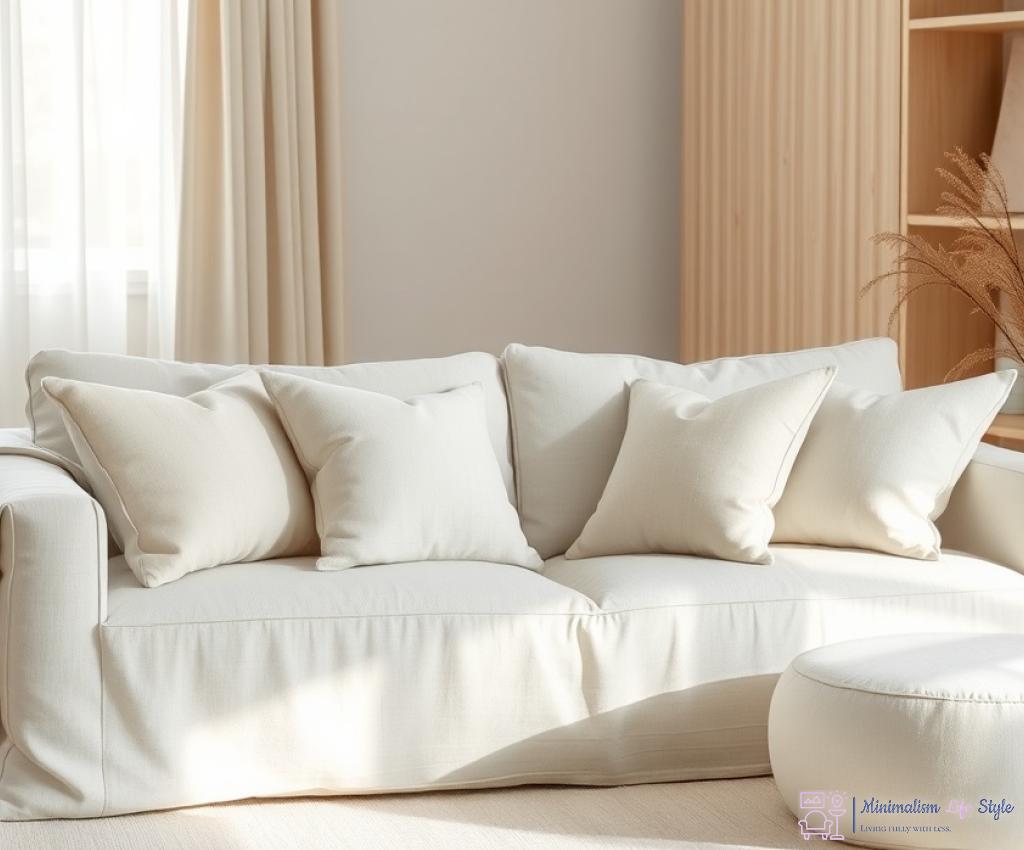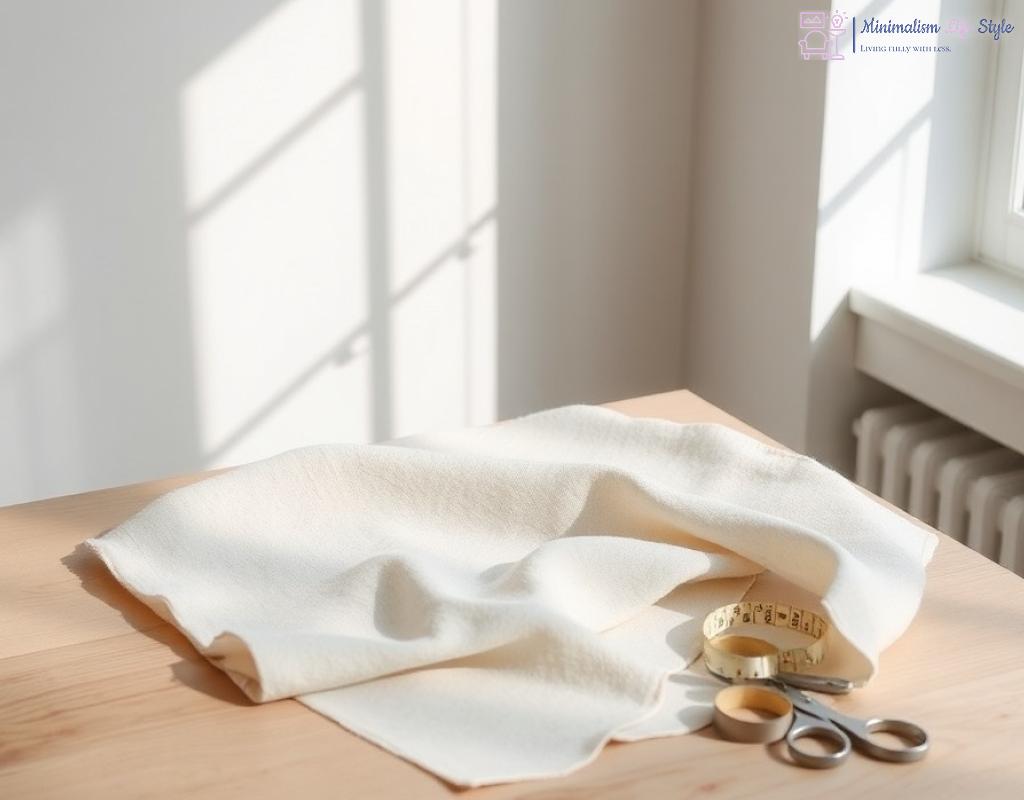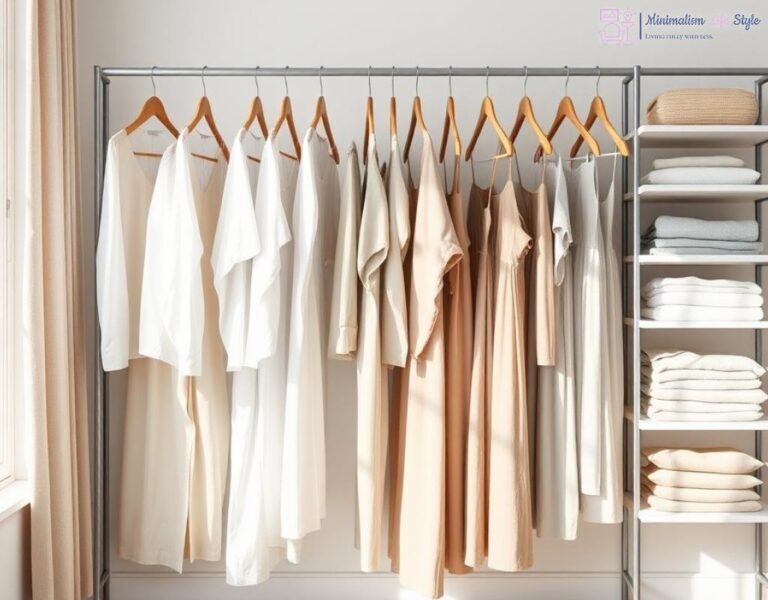Embracing Simplicity: The Essence of Minimalist Fabrics

Minimalism is more than just a design aesthetic; it’s a philosophy that champions simplicity, functionality, and intentionality. In the realm of fashion and interior design, this principle can be beautifully embodied through the careful selection of fabrics. Choosing minimalist fabrics doesn’t merely focus on appearance; it reflects a lifestyle that values quality over quantity, encouraging us to curate our wardrobes and living spaces with pieces that truly resonate with us.
When selecting fabrics, it’s essential to consider not only the visual appeal but also the tactile experience and environmental impact. By embracing the essence of minimalism, we can create environments and styles that speak to our values while remaining effortlessly chic.
As you dive into the world of minimalist fabrics, certain materials stand out for their versatility and understated elegance. Below is a list of standout fabric choices that embody the minimalist ethos:
- Linen: Known for its natural, textured feel, linen is breathable and ages beautifully, making it a timeless choice for clothing and home textiles.
- Cotton: A staple in minimalist wardrobe, cotton offers simplicity with its wide range of weaves, colors, and textures, easily aligning with a clean aesthetic.
- Wool: This fabric is celebrated for its durability and warmth. Its natural variations allow it to maintain a minimalist look while providing comfort.
- Silk: While often associated with luxury, silk can also fit within a minimalist framework due to its smooth texture and ability to drape elegantly.
- Canvas: Perfect for both fashion and functional applications, canvas offers a rugged yet minimalist look, especially in bags and outerwear.
Crafting a minimalist wardrobe requires thoughtful consideration of fabric types that align with your lifestyle and values. The goal is to curate pieces that not only serve a purpose but also bring joy and aesthetic pleasure. Here are some steps to guide your fabric selection:
- Evaluate Your Needs: Consider the climate, occasions, and how often you plan to wear or use the fabric.
- Prioritize Quality: Invest in high-quality fabrics that will withstand the test of time and don’t easily wear out.
- Choose Versatile Colors: Opt for a neutral palette that can easily mix and match, ensuring maximum wearability.
- Consider Sustainability: Look for fabrics that are sustainably sourced or produced, aligning with minimalist values of responsibility and mindfulness.
- Test the Feel: Always touch and, if possible, try the fabric to ensure it feels good against your skin and aligns with your comfort preferences.
Color Palette Mastery: Choosing Neutral Tones
In the realm of minimalist design, the color palette plays a pivotal role in creating an atmosphere that is both serene and sophisticated. Neutral tones serve as the backbone of minimalist aesthetics, allowing us to curate spaces and wardrobes that reflect tranquility and intent. By mastering the art of selecting neutral hues, we can elevate the beauty of minimalist fabrics and ensure that our choices resonate with the principles of simplicity and elegance.
Neutral colors are not merely a backdrop; they are a powerful tool that can influence mood, perception, and style. When we choose fabrics in shades of beige, gray, white, and soft pastels, we create a versatile canvas that can seamlessly integrate into any environment or outfit. Here are some compelling reasons why incorporating neutral tones into your minimalist fabric selections is essential:
- Timelessness: Neutral colors never go out of style, ensuring that your wardrobe remains relevant and chic season after season.
- Versatility: They can be easily mixed and matched, providing endless combinations that maximize wearability.
- Calming Effect: Soft, neutral shades promote a sense of peace and relaxation, making them ideal for both fashion and home decor.
To achieve a cohesive and harmonious look, it’s crucial to select a color palette that complements the fabrics you choose. By limiting your palette to a few select neutral shades, you can ensure that each piece works together effortlessly. Below is a simple comparison of popular neutral colors and their ideal applications:
| Color | Best Uses | Complementary Fabrics |
|---|---|---|
| Beige | Outerwear, Loungewear | Linen, Cotton |
| Gray | Business Attire, Home Textiles | Wool, Canvas |
| White | Casual Wear, Bedding | Silk, Cotton |
| Soft Pastels | Accessories, Accents | Silk, Lightweight Wool |
By understanding how different neutral tones can work together, you can create outfits and spaces that feel deliberate and thoughtfully curated. Remember to consider the texture and finish of the fabrics as well, as these aspects can further enhance the overall aesthetic.
Choosing neutral tones in your minimalist fabric selections is about more than just color; it’s about crafting a narrative of simplicity, elegance, and intentionality. By embracing a limited color palette and focusing on quality fabrics, we can enjoy the beauty of minimalism while making a statement that transcends trends. As you embark on your journey in fabric selection, let the mastery of neutral tones guide you towards creating a wardrobe and living space that is both timeless and inspiring.
Texture Talks: The Role of Feel in Minimalist Design
In the world of minimalist design, texture is often an underappreciated element that plays a crucial role in the overall aesthetic. While color and form tend to steal the spotlight, the tactile experience of fabric can profoundly influence our perception of simplicity and elegance. By focusing on the feel of materials, we can elevate our minimalist choices, ensuring they resonate not only visually but also physically. The right texture can evoke emotions, stir memories, and create a sensory experience that transforms our understanding of minimalism.
When selecting fabrics for a minimalist wardrobe or living space, the sensory experience should guide your decisions. Fabrics like soft cotton and silky linen not only provide an aesthetic appeal but also invite touch, creating a more immersive experience. Imagine slipping into a finely woven cotton shirt—the gentle caress against your skin reminds you of the beauty of simplicity. This connection between texture and emotion is what makes minimalist design so powerful and inviting.
Moreover, incorporating varied textures can add depth to your minimalist aesthetic without overwhelming it. A soft wool throw, paired with a smooth silk pillow, creates an inviting atmosphere that feels both calm and luxurious. The key is to achieve a balance—combining different textures while keeping the overall look streamlined and cohesive. By thoughtfully considering the feel of each fabric, you can curate an environment that feels both intentional and serene.
As you explore the textures available, it’s essential to hone in on materials that align with the minimalist philosophy. Fabrics like linen offer a rustic charm with their natural fibers, while the smoothness of silk brings a touch of sophistication to any setting. Investing in high-quality textures not only enhances durability but also ensures that each piece remains timeless and relevant.
Additionally, consider how textures interact with light and space. Matte finishes can provide a subdued elegance, while slightly lustrous fabrics can catch the light in a way that adds interest without being overpowering. By choosing fabrics that complement each other, you can create a harmonious blend that speaks to the essence of minimalism—where every detail is intentional, and every texture contributes to a cohesive narrative.
Sustainable Selections: Eco-Friendly Fabric Choices
In an era where environmental consciousness is paramount, the minimalist philosophy aligns beautifully with sustainable living. Choosing fabrics that are not only aesthetically pleasing but also eco-friendly is a powerful statement about our values. Embracing sustainable fabric selections means we can enjoy the beauty of minimalism while contributing positively to the planet. This journey into sustainable fabric choices opens doors to a world where style meets responsibility, allowing us to curate wardrobes and spaces that reflect both elegance and ecological mindfulness.
When venturing into the realm of eco-friendly fabrics, it’s essential to understand what makes a fabric sustainable. Fabrics derived from organic materials, such as cotton and linen, are grown without harmful pesticides or synthetic fertilizers. Additionally, recycled textiles breathe new life into discarded materials, reducing waste and promoting a circular economy. Fabrics like Tencel and hemp are also noteworthy; they use fewer resources during production and are biodegradable, aligning seamlessly with minimalist principles of simplicity and longevity.
Moreover, the impact of fabric production on the environment cannot be overlooked. Fabrics that consume less water, energy, and chemicals during their manufacturing process are ideal choices for a sustainable wardrobe. By prioritizing these eco-friendly options, we can embody a lifestyle that values both aesthetic appeal and environmental stewardship, creating a harmonious balance between style and sustainability.
Making conscious choices about fabric selection is crucial for those who wish to embrace minimalism while honoring the planet. Begin by seeking out brands that prioritize sustainable practices, ensuring that their fabrics are ethically sourced and produced. Researching certifications, such as Global Organic Textile Standard (GOTS) or OEKO-TEX, can guide your decisions and provide assurance that the materials meet environmental and social criteria.
As you curate your wardrobe, consider the longevity of each piece. Fabrics that are durable and timeless not only reduce the need for frequent replacements but also promote a minimalist ethos of quality over quantity. By selecting pieces that are versatile and made from sustainable materials, you can create a cohesive collection that reflects your personal style while making a positive impact on the environment.
Function Meets Form: Practicality in Minimalist Fabrics
In the realm of minimalist design, the balance between functionality and aesthetic beauty is paramount. Fabrics chosen for minimalist aesthetics should serve a dual purpose; they must not only enhance the visual narrative but also offer practical benefits that align with a simplified lifestyle. The right fabric can embody this philosophy, ensuring that every piece in your collection is not just an object of beauty but also a testament to thoughtful living. This is where the concept of practicality in minimalist fabrics comes into play, highlighting the importance of selecting materials that contribute to both form and function.
When curating a minimalist wardrobe or living space, durability should be a guiding principle. Fabrics like high-quality cotton and robust wool stand out for their longevity, allowing them to withstand the test of time while maintaining their aesthetic appeal. Investing in durable materials means fewer replacements, resonating with minimalist values of quality over quantity. Each piece becomes a staple, one that can evolve with your style and needs without losing its integrity.
Moreover, considering the care and maintenance of fabrics is essential. Fabrics that require minimal upkeep not only simplify your life but also reinforce the minimalist ethos. For example, choosing wrinkle-resistant linen or machine-washable cotton can save time and energy, making your wardrobe more functional without compromising on elegance. The practicality of these fabrics encourages a lifestyle where simplicity reigns, allowing you to focus on what truly matters.
Versatility is another vital aspect of practical minimalist fabrics. Fabrics that can transition seamlessly from one occasion to another or serve multiple purposes can greatly enhance your wardrobe’s efficiency. Think about fabrics that can be styled for both casual outings and more formal events. For instance, a tailored wool blazer can be paired with linen pants for a relaxed yet polished look, showcasing how a single piece of fabric can fulfill various roles in your wardrobe.
In addition, when selecting fabrics, it’s important to consider their adaptability to different climates and contexts. Fabrics like breathable cotton or moisture-wicking Tencel can be ideal for various weather conditions, allowing you to maintain comfort without sacrificing style. By prioritizing versatile fabrics, you can create a minimalist wardrobe that not only looks good but also meets your practical needs in everyday life.




